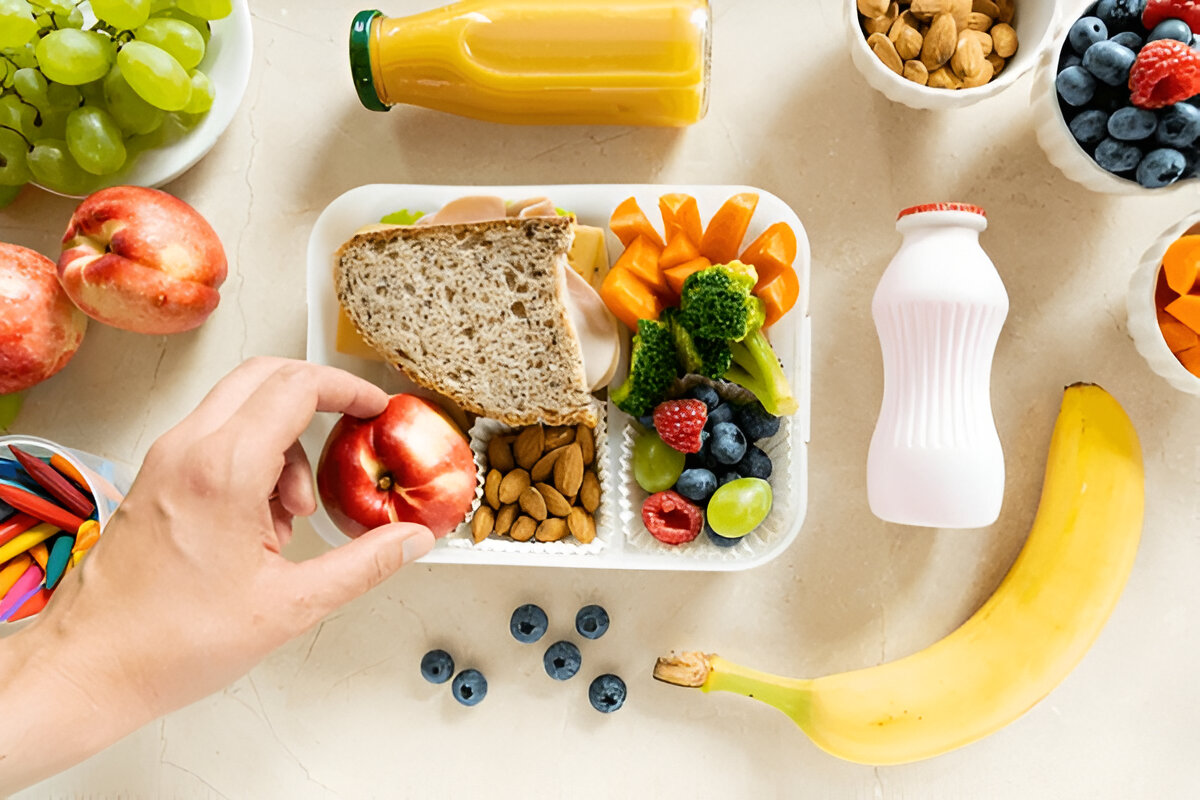Are you planning your first backpacking trip? Do you wonder what foods to bring to keep your energy up while exploring the beauty of nature?
Or maybe you’re curious about how to pack nutritious meals without adding too much weight to your backpack. If you are searching for these questions, you’re in the right place!
Learn everything you need to know about what to eat while backpacking in this blog post including:
- Meal planning essentials, hydration tips, and packing strategies.
- 7- day backpacking meal plan.
- 3 day backpacking meal plan.
- And other essential meal planning samples.
What to Eat While Backpacking?
When backpacking, eat lightweight, non-perishable foods like dehydrated meals, instant noodles, nuts, energy bars, dried fruits, and jerky. Include fresh foods like apples and hard cheese for the first few days.
But, before you pack your food, you need to understand how many calories you need each day.
Calorie Needs
Most backpackers require 3000 to 4000 calories daily, depending on their activity level. Hiking burns a lot of energy. So, you need foods that are high in calories but light in weight.
Nutrient Balance
Aim for a balanced intake of carbohydrates, protein, and fats to sustain your energy levels throughout the day. Carbs provide quick energy, protein aids in muscle recovery, and fats offer long-lasting fuel.
Next, look for the various food options for backpacking.
Backpacking Food Ideas: Various Food Types
When planning meals, divide them into categories: meals and snacks. Think about what you enjoy eating and what will keep you energized.
Also, consider any dietary restrictions, like being vegetarian or gluten-free. This way, you can ensure you have plenty of tasty options.
Here, I’ve discussed different meals. Have a look!
1. Breakfast Options for Backpacking
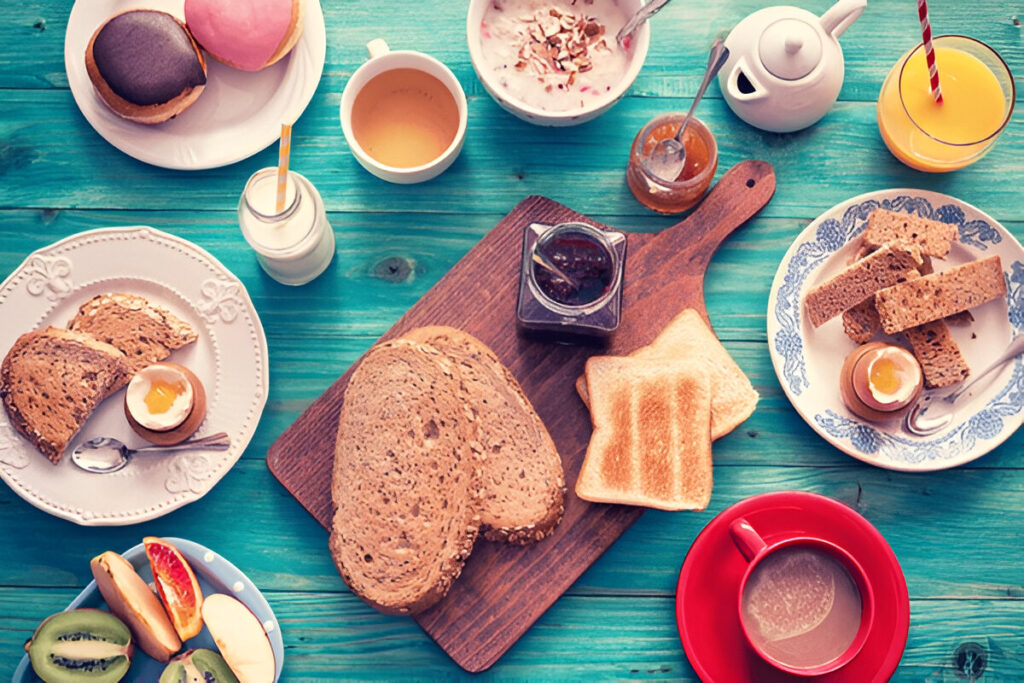
Breakfast is important for starting your hiking day right. A good breakfast gives you energy for the morning ahead.
| Category | Item | Preparation | Notes |
| Instant Meals | Oatmeal packets | Just add hot water | Lightweight; can add nuts or dried fruit for flavor and nutrition |
| Protein Sources | Powdered scrambled eggs | Just add water or cook | Easy to prepare; keeps you full until lunchtime |
| Bacon meat bars | Ready to eat | Convenient source of protein | |
| Quick Energy Foods | Instant coffee or tea bags | Just add hot water | Great for warm drink lovers |
| Nut butter pouches | Ready to eat | Perfect for spreading on crackers or bread for a quick energy boost |
2. Lunch Options for Backpacking
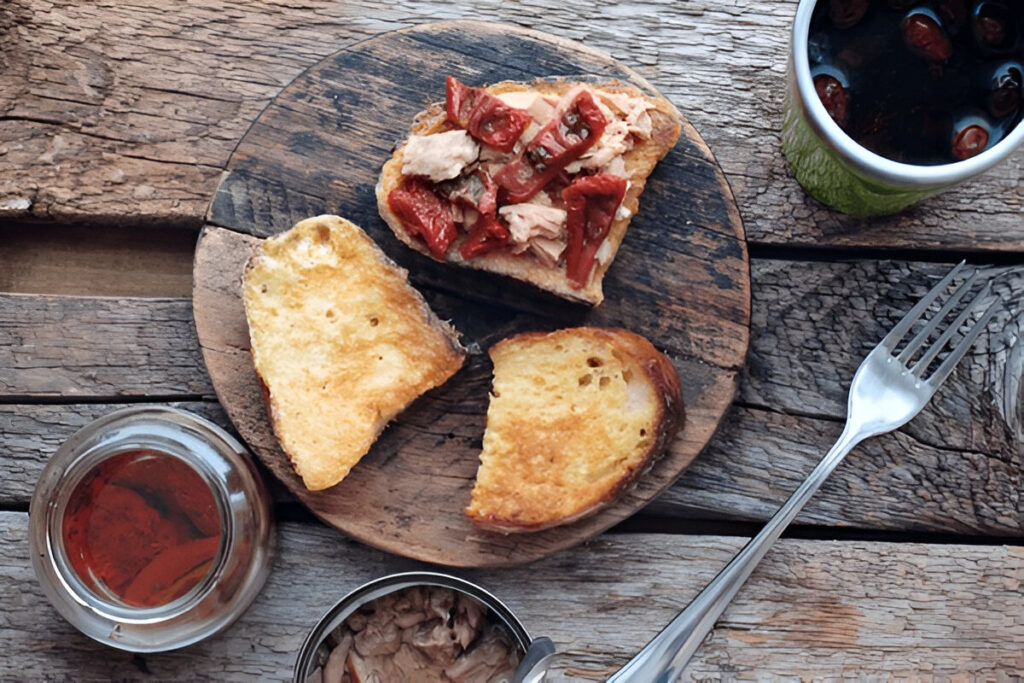
Lunch should be simple and easy to eat on the way. You want something that refuels you without slowing you down.
| Category | Item | Preparation | Notes |
| Portable Proteins | Tuna or chicken packets | Ready to eat | Mix with mayo and spread on bagels for a sandwich |
| Carbohydrate Sources | Bagels, tortillas, or pita bread | Ready to use | Lightweight and versatile base for lunch |
| Snack Combinations | Hummus with crackers | Ready to eat | Tasty and different lunch option |
| Dried fruits with nuts | Ready to eat | Sweet and salty snack for energy |
3. Dinner Options for BackPacking
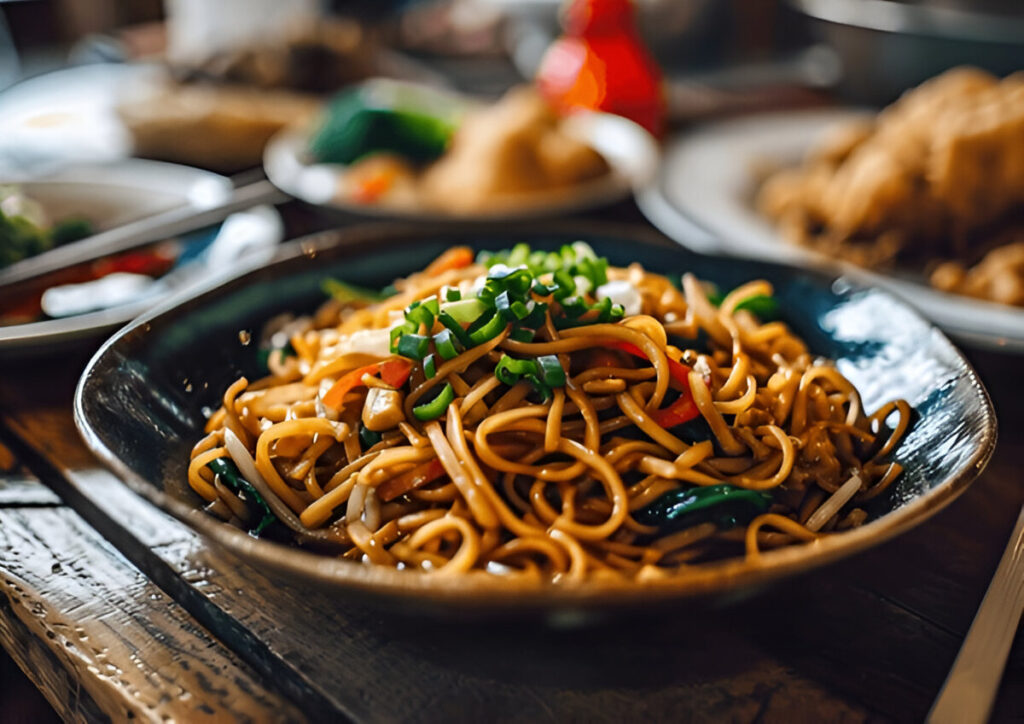
After a long day of hiking, you’ll want a satisfying dinner that replenishes your energy. Here are some of the dinner options that you can carry for backpacking:
| Category | Item | Preparation | Notes |
| Freeze-Dried Meals | Various options | Add boiling water | Incredibly convenient; replenishes energy |
| Quick-Cooking Options | Instant mashed potatoes | Cook quickly with water | Filling and comforting after a long day outdoors |
| Ramen noodles | Cook quickly with water | Filling and comforting after a long day outdoors |
4. Snack Options for Backpacking
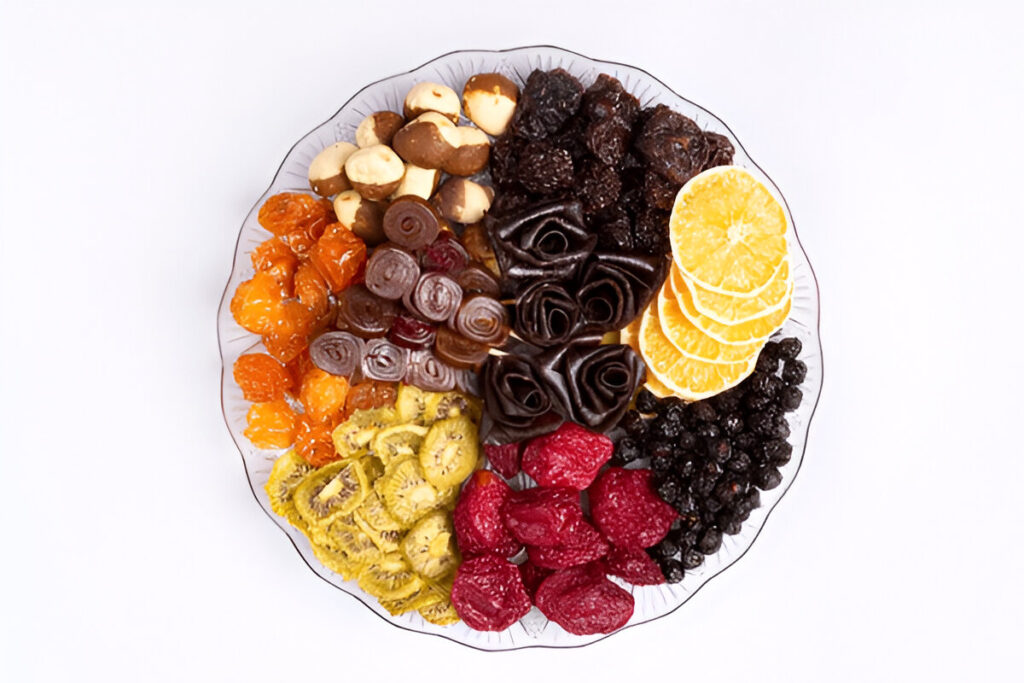
Snacks are essential for keeping your energy levels up during the day. They help bridge the gap between meals.
- High-Calorie Options: Trail mix made from nuts and dried fruit is perfect for snacking on the trail. It’s lightweight and packed with energy.
- Sweet Treats: Energy bars and granola bars provide quick energy boosts when you’re feeling tired. Don’t forget to bring along some chocolate or gummy candy.
5. Hydration Considerations for Backpacking
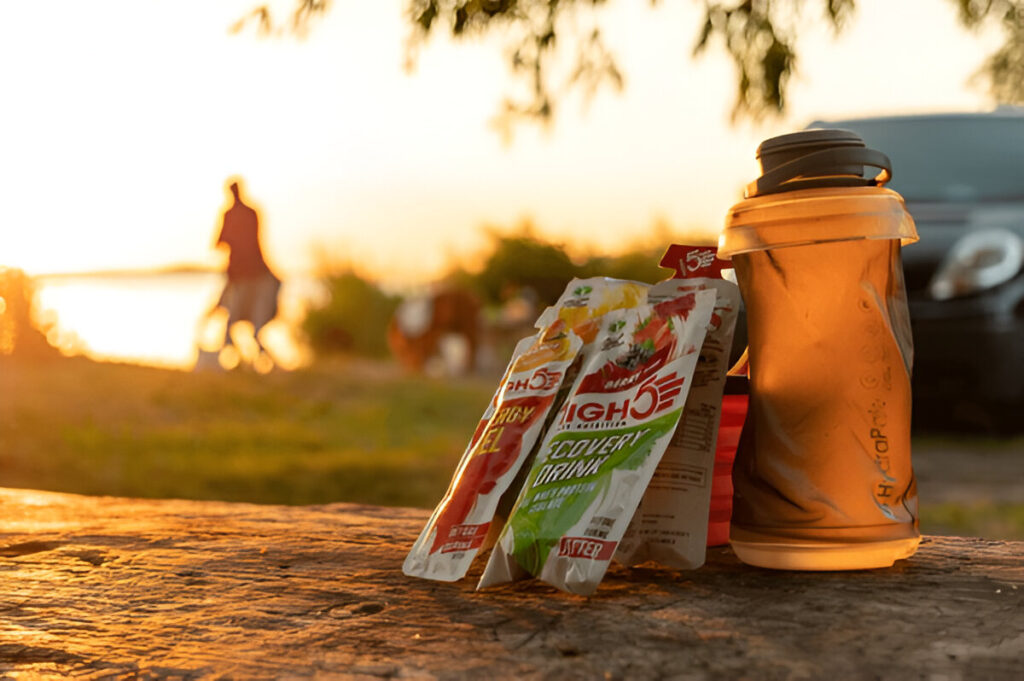
Staying hydrated is just as important as eating well while backpacking. Water keeps your body functioning properly during hikes.
1. Water Quantity
Aim to drink at least 2-4 liters of water per day, depending on the climate, your activity level, and your sweat rate.
2. Water Purification
Always carry enough water with you. If you’re hiking in areas where water sources are available, consider using purification tablets or filters to ensure it’s safe to drink.
3. Electrolyte Supplements
Besides water bottles, consider taking electrolyte supplements that can help replenish lost minerals during strenuous hikes. You can find them in powder form that mixes easily into your water.
Read more on hydration in this blog: How to Carry Water Bikepacking? | A Comprehensive Guide
Tips for Efficient Packing and Preparation
To save space in your backpack, consider repackaging foods into resealable bags. This reduces bulk and minimizes waste, and it makes it easier to grab snacks on the way.
Moreover, plan your meals ahead of time to avoid food waste during your trip. Pre-cook some meals at home if possible; freeze-dried options are especially easy because they just need hot water to prepare.
Sample Meal Plans
Now, it’s time for some sample meal plans based on duration. Remember to adjust to your personal dietary needs.
7-Day Backpacking Meal Plan (Approx. 3500 Calories/Day)
Here’s a simple 7-day meal plan that includes three meals and snacks each day:
Day 1:
- Breakfast: Oatmeal with dried fruit (400 calories)
- Lunch: Tortilla wraps with salami and cheese (700 calories)
- Dinner: Freeze-dried chili (800 calories)
- Snacks: Trail mix, energy bar (1600 calories)
Day 2:
- Breakfast: Granola with powdered milk (450 calories)
- Lunch: Tuna salad on crackers (650 calories)
- Dinner: Instant rice with chicken (750 calories)
- Snacks: Nuts, dried fruit, chocolate (1650 calories)
Day 3:
- Breakfast: Instant pancakes (500 calories)
- Lunch: Hummus with pita bread (600 calories)
- Dinner: Dehydrated pasta primavera (700 calories)
- Snacks: Energy bar, jerky, apple (1700 calories)
Day 4:
- Breakfast: Scrambled eggs (powdered) (400 calories)
- Lunch: Bagel with peanut butter (700 calories)
- Dinner: Freeze-dried beef stew (800 calories)
- Snacks: Trail mix, granola bar (1600 calories)
Day 5:
- Breakfast: Muesli with nuts (450 calories)
- Lunch: Jerky with cheese (650 calories)
- Dinner: Instant mashed potatoes with gravy (750 calories)
- Snacks: Nuts, dried fruit, gummy candy (1650 calories)
Day 6:
- Breakfast: Instant oatmeal (400 calories)
- Lunch: Chicken salad wrap (700 calories)
- Dinner: Dehydrated curry (800 calories)
- Snacks: Trail mix, energy bar (1600 calories)
Day 7:
- Breakfast: Granola bars (450 calories)
- Lunch: Salami sandwiches (650 calories)
- Dinner: Freeze-dried lasagna (750 calories)
- Snacks: Nuts, dried fruit, chocolate (1650 calories)
This meal plan provides a variety of foods that are lightweight, easy to prepare, and packed with nutrients to keep you energized during your backpacking adventure.
3-Day Backpacking Meal Plan (Approx. 3500 Calories/Day)
For shorter trips, here’s a quick 3-day meal plan:
Day 1
- Breakfast: Oatmeal (400 calories)
- Lunch: Tuna wrap (700 calories)
- Dinner: Dehydrated chili (800 calories)
- Snacks: Trail mix, energy bar (1600 calories)
Day 2
- Breakfast: Granola (450 calories)
- Lunch: Jerky and cheese (650 calories)
- Dinner: Instant noodles (750 calories)
- Snacks: Nuts, dried fruit, chocolate (1650 calories)
Day 3
- Breakfast: Pancakes (500 calories)
- Lunch: Hummus with crackers (600 calories)
- Dinner: Freeze-dried pasta (700 calories)
- Snacks: Energy bar, jerky, apple (1700 calories)
Related Articles:
Bikepacking Gear List: 28 Items Included
How to Start Bikepacking? | A Comprehensive Guide
Frequently Asked Questions (FAQs)
What food is good for backpacking?
Good foods for backpacking are lightweight, high in calories, and easy to prepare. Some great options include instant oatmeal, trail mix, energy bars, canned tuna, and freeze-dried meals.
How much should I eat while backpacking?
While backpacking, you should aim to eat about 3000 to 4000 calories per day, depending on how hard you’re hiking. This helps keep your energy up. Make sure to include a mix of carbohydrates, proteins, and fats in your meals and snacks.
What is the best food for long hikes?
The best food for long hikes includes high-energy items that are easy to carry. Some top choices are energy bars, nuts, dried fruits, jerky, and freeze-dried meals. These foods are lightweight and provide the necessary nutrients to keep you going.
How much food for a 5-day backpacking trip?
For a 5-day backpacking trip, plan to bring about 15,000 to 20,000 calories total. This means you’ll need around 3,000 to 4,000 calories per day. Pack a variety of meals and snacks to ensure you have enough energy throughout your trip.
What are some easily available grocery store options for backpacking meals?
You can find instant oatmeal packets, canned tuna or chicken, whole grain crackers, and dried fruits and nuts. These items are easy to pack and require little preparation.
What are some quick no-cook meals for backpacking?
Consider making peanut butter sandwiches on whole grain bread, salami or cheese wraps, and trail mix made from nuts, seeds, and dried fruit. These meals save time and effort, perfect for busy days on the trail.
What are dehydrated meal options available for backpackers?
Look for brands like Mountain House, which offers flavors like beef stew. Backpacker’s Pantry has options like chicken curry. These meals only require hot water for preparation, making them lightweight and convenient.
What are some easy-to-make meals while backpacking?
Keep it simple with instant rice mixed with canned beans, ramen noodles topped with dehydrated vegetables, or couscous prepared quickly by soaking in hot water. These meals are easy to make and very satisfying after a long hike.
Final Thoughts
Eating well while backpacking is all about balance and preparation. By planning your meals carefully and choosing nutrient-dense foods, you’ll have the energy needed for all your outdoor adventures. Remember to enjoy experimenting with different foods until you find what works best for you.
